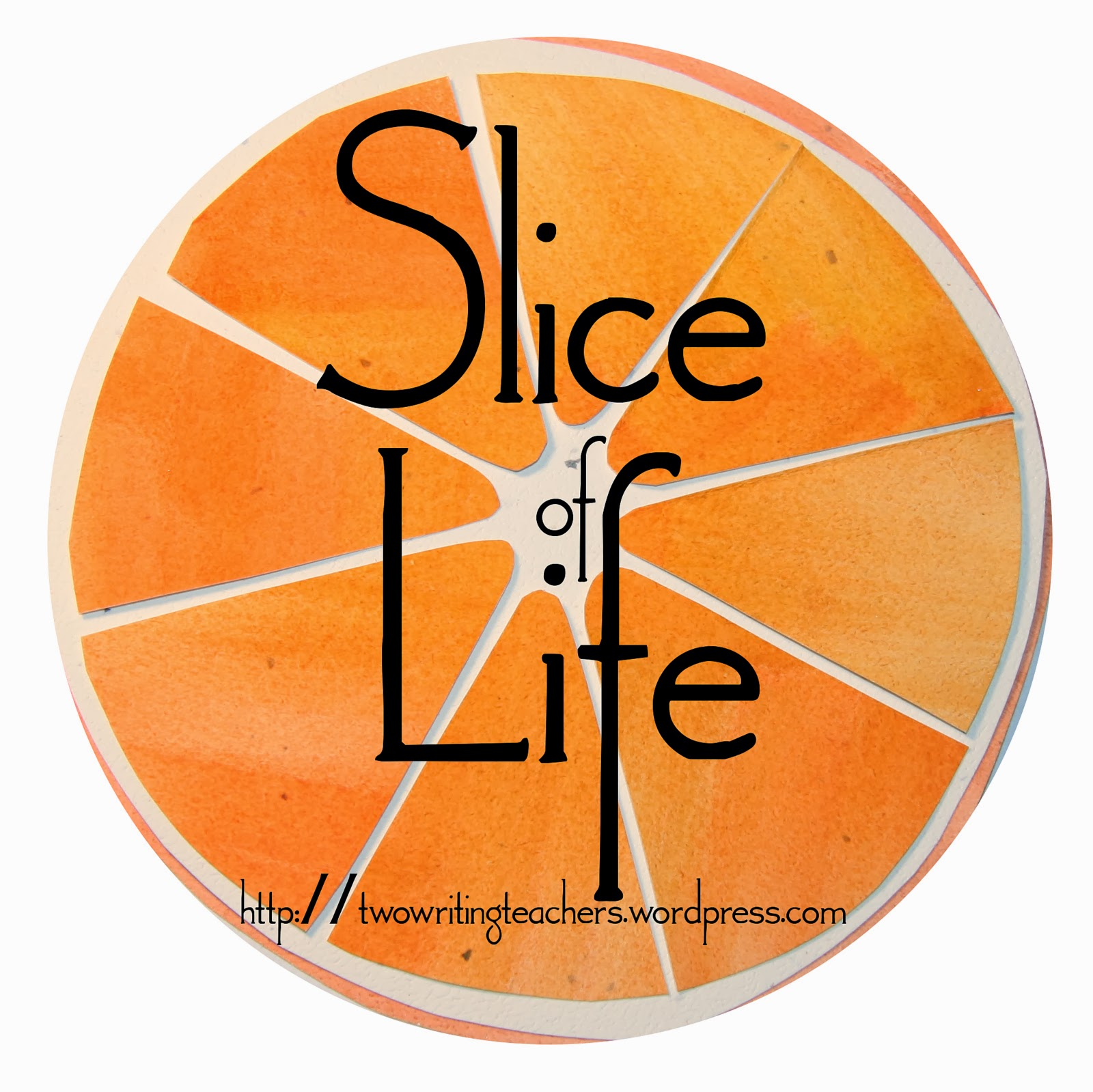Let's face it. We love stories. We tell them. We watch them. We share them. We laugh and wonder over them. Stories move us to action and to tears. We may read with our ears, with our eyes, or even with all of our senses while playing in immersive worlds. Our human love of stories does not always translate into a love of reading the printed word.
Seeding students' love for books and the printed world of story, takes time, intention and a whole lot of practice. I am just beginning that practice with seventh graders. Here are 6 moves I make to nurture readers' joy.
1. I use excerpts from books from our Sunshine State readers list for this year in most of my initial assessments and strategy introductions at the start of the year (Writing that Shows, Letter to Students). Those excerpts give me a chance to book talk books I've read over the summer in order to introduce them to kiddos. We start a conversation about books during the first days of school.
P didn't write about books when he wrote back, but S did. I learn a lot about students as readers and writers from the first things they write in my class.
2. Do a book pass or book tasting to introduce books to kids. This activity has gone by many names in the thirty years I've been teaching: speed dating, book tasting, etc. This year, we went to the media center. I sat students in their regular groups of 4 and I put a book bin of 9-12 books on each table.
I began by talking about the word buffet and the buffet at Basilico in Singapore (it's cheese room is pictured on the slide). Then I invited students talk about how the media center is like a buffet. Once we shared, I demonstrated how to preview a book and how to take a few notes for our reader selves so that we could remember the titles when we were next looking for a book to read. Then I released students to preview the books in their small groups. Once they'd looked at and taken note of 5-7 of the titles I had curated for their groups, they were able to free range through the stacks in the media center.
3. We will kick off independent reading in class on Monday. I will give students 8-10 minutes of reading time at the start of class. Reading is our bell work, our do now, our default whenever we finish something early. I am teaching that routine right now and I know that it will not be well rooted for a many weeks. Short bursts of reading keep kids engaged. I have found that if I allow too much time for reading, especially when I do not yet know the readers in my room, many kids fall asleep or disengage.
Once rooted the reading routine will begin producing joy, but that takes months, sometimes until January even.
4. Instead of keeping track on a s
hare a google sheet as I've done in the past with older students. I will record their progress on anecdotal notes I keep in GoodNotes 5 as I confer with them. For our first session though, I used Nanci Atwell's Status of the Class: called names, gathered titles and page numbers. I praised students progress who surprised me by having books they were in the middle of already. This formative check in is quick, about a minute to call and jot. Sharing that way once a week, creates space for students to hear a variety of book choices and see each others' excitement. Plus, if I am the one monitoring, I can make sure we read more than we count or account.
Reading is not accounting after all.
5. Weekly, I will ask students to write about what they have read in their Readers' Writers' Notebook (RWN). This practice I learned from Linda Reif, though the title has morphed into ELA Journal at present. This quarter I invite students to write
using these prompts. There is a time and a place for prompted and unprompted writing in our class. I prompt my readers who are writing about their independent reading because our prompts help us practice what we are learning in class.
6. Once we've begun reading and writing about what we're reading, I begin conferring with the kids. Our first conferences about their reading have many purposes--here they are described in terms of high school readers. I imagine there will be some shifts with middle school readers as their reading lives are at different stages.
When I taught high school sometimes the
Best Laid Plans still need to be adapted when it comes to
Conferences and Time. Making conferring a routine roots us in reading practice that cultivates and shares joy. I'll be sure to share how these routines work or go awry in my middle school classroom too. We eventually shift from talking about their reading, to using their journal writing to discuss reading and writing. It is all
Reading and Practice.
Setting up reading and writing routines takes time. We've got to plant the seeds. Let them germinate. The sprouts, sometimes takes weeks. There is a science to reading and we need to use that data to check readers' skills and growth along the way.
Eventually after many months of consistent care, readers will harvest joy. They will bring the book love to each other and we will come together in community to share in the bounty of story.








